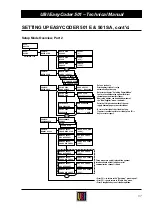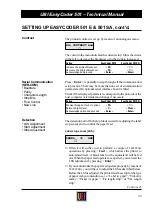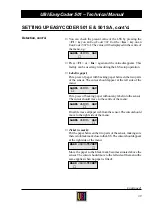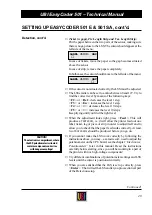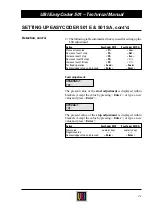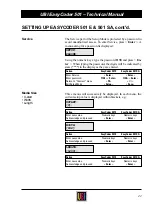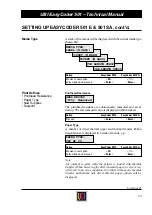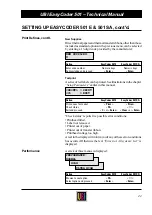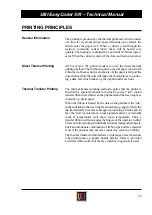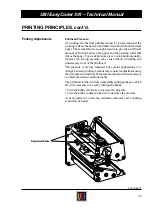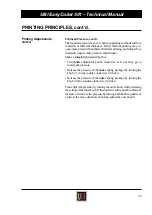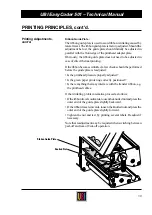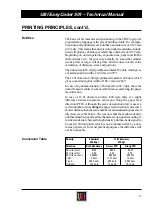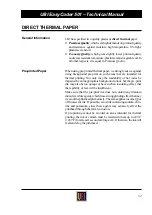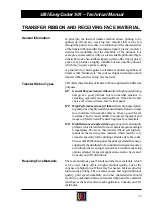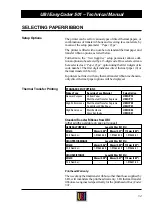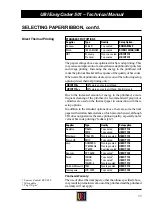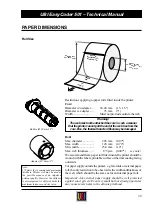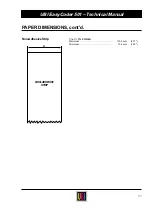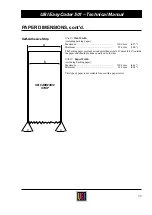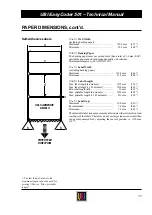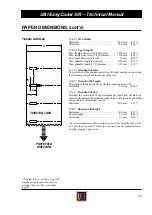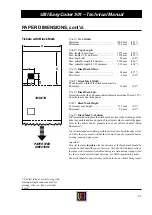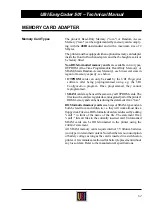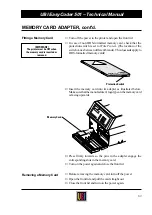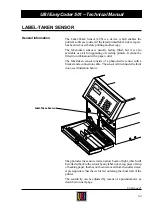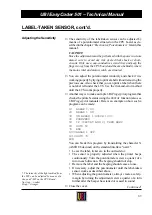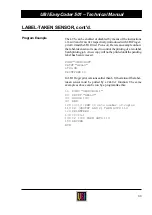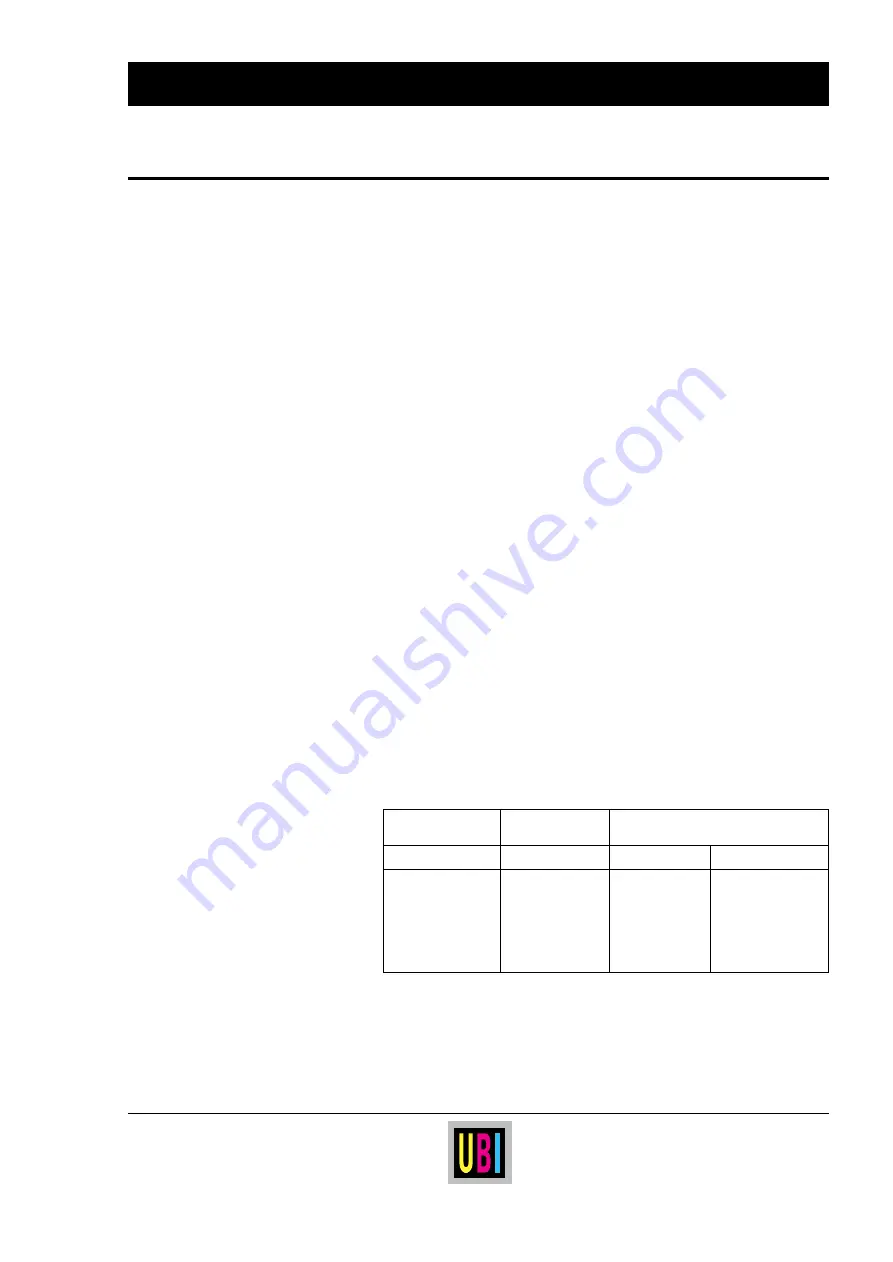
51
UBI EasyCoder 501 – Technical Manual
PRINTING PRINCIPLES, cont'd.
Dot Size
Density:
8 dots/mm
11.81 dots/mm
203.2 dpi
300 dpi
Direction:
Both directions
Across PFD
Along PFD
Dot size (mm):
0.125
0.085
0.083
Dot size (mils):
4.92
3.33
3.28
Dot size (inches):
0.00492
0.00333
0.00328
1 mm:
8 dots
11.81 dots
12 dots
1 inch:
203.2 dots
300 dots
304.8 dots
1/16 inch:
12.7 dots
18.8 dots
19.1 dots
Conversion Table
The basis for all measures and positioning in the UBI Fingerprint
programming language is the size of printhead dots. For example,
in an 8 dots/mm printhead, each dot has a nominal size of 0.125 mm
(4.9 mils). This means that a heated dot under standardized condi-
tions will produce a black spot which has a diameter of 0.125 mm.
Depending on dot temperature, exposure time, paper and ribbon
characteristics etc., the spot may actually be somewhat smaller
(weak print) or larger (black print), but that does not affect the
calculation of distances, sizes and positions.
The 8 dots/mm (203.2 dpi) printhead contains 832 dots, which gives
a maximum print width of 104 mm (4.095").
The 11.81 dots/mm (300 dpi) printhead contains 1280 dots, which
gives a maximum print width of 108.3 mm (4.264").
In case of a printhead density of 8 dots/mm (203.2 dpi), the same
unit of measure (dots) can be used both across and along the paper
feed direction.
In case of 11.81 dots/mm printers (300 dpi), there is a slight
difference between measures across and along the paper feed
direction (PFD). Although the same designation (dot) is used, a
certain number of dots along the paper feed direction represents a
shorter distance than the same number of dots across the paper feed
direction, see table below. The reason is that the medium density
printhead and the paper feed mechanism are designed according to
metric standards, whereas the high density printhead is designed to
be exactly 300 dots/inch, which is not compensated for by a non-
metric paper feed. For most practical purposes, the difference will
not be noticeable.

